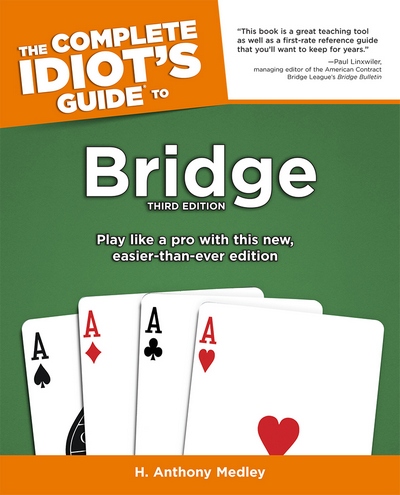| The first and second editions of Complete Idiot's Guide to Bridge by H. Anthony Medley comprised the fastest selling beginning bridge book, going through more than 10 printings. This updated Third Edition includes a detailed Guide to Bids and Responses, along with the most detailed, 12-page Glossary ever published, as well as examples to make learning the game even easier. Click book to order. Available in all bookstores and on Kindle. | ||
|
Captain Phillips (8/10) by Tony Medley Runtime135 minutes. OK for children. While A Hijacking earlier this year gave a compelling story of a hijacking on the high seas, this one is a completely different deal. The former involved months of negotiations and emphasized the boredom of the captured crew. This new one is filled with action and bullets and typifies Hollywood. Even though both are based on true stories, to give Hollywood credit, the hijacking of Captain Phillipsí (Tom Hanks) ship was over in a very short period of time and did end with a lot of violence. It is based on the 2009 hijacking of the container ship Maersk Alabama by Somali pirates. Fortunately, itís directed by Paul Greengrass, who has a string of terrific action films to his credit including the two Bourne films that were any good and 2006ís United 93, the only good film yet made about 9/11 (Oliver Stoneís try, 2006ís World Trade Center, was dismal to give it the best of it). Based on Phillipsí book, A Captainís Duty: Somali Pirates, Navy SEALs, and Dangers Days at Sea, written with Stephan Talty, the screenplay is written by Billy Ray, who wrote and directed Shattered Glass (2003), one of the best print media movies ever made. Even though the film is too long, these two make it worth the time. Greengrass makes it sort of like a documentary, called a docudrama, in the style of Roberto Rosselliniís Rome, Open City (1945) and Gillo Pontecorvoís The Battle of Algiers (1966), although this is much more Hollywood than those. Greengrass strikes a happy medium, obtaining the influence of the older films without sacrificing what makes Hollywood Hollywood. And thatís slam-bang action. Greengrass shot most of the film, 60 daysí worth, on the open sea. This required exceptional skills of the cinematographer, Barry Ackroyd, who says that no CG was used in the film. Everything shown actually happened. Hanks, for example, had to spend many days in the lifeboat, as did other cast members, and they all suffered sea sickness. Hanks gives a good performance, as does Barkhad Abdi as Muse, the leader of the Somalis. While I remember the incident well, I thought that Phillips was heroic, volunteering to go with the pirates as a hostage. Thatís not the way this film shows it. Also, I never could understand how the SEAL sharpshooters could have such accurate shooting on the high seas to take out three pirates simultaneously. The film covers this shooting, but it still doesnít explain how such near-impossible shots could have been made. The film gives a relatively sympathetic picture of the pirates, especially Muse, and actually makes the Navy look deceitful and dishonest. Maybe this is what happened, but you come away feeling that Muse ended up as a victim. Greengrass keeps the tension mounting throughout the entire film. Despite the runtime, the story does not lag. October 10, 2013
|
||
